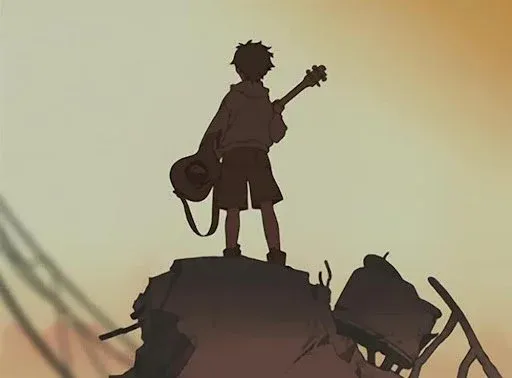FLCL: The Cult Classic That Defined a Generation of Anime Fans

It’s hard to explain the hold FLCL has on a generation of American anime fans. It’s the cult classic that everyone has seen, everyone has some real thoughts about, and basically nobody’s happy to see beaten like a dead horse in the name of nostalgia and profit. Fooly Cooly (FLCL) was a beautiful grind punk project created as a sandbox for the restless minds of a now-shambolic husk of the once-great Studio Gainax. It’s since been dragged back to life four times, but the original still hits like a base guitar to the head.
When I was much younger and had only started down my path of anime fandom, I, like many young and bright-eyed American otaku, watched Adult Swim. Then in 2003 I watched the original broadcast of FLCL and was blown out off the water. The show discussed preteen boyhood in a way and with a clarity that still astounds me. It was loud, bombastic, and raw. Naota's relationship with Mamimi was deeply unsettling, yet it made an equally alarming amount of sense. The camera’s treatment of Haruko as a shitty, selfish adult while Naota saw her as a romantic crush felt honest in a way that still stuns me now. As much as FLCL is a story about young boys growing up, it’s also a story about how no one’s ever really grown up, and anyone who claims to be shouldn’t really be trusted.
Coming back to Harako for a second, if there’s one spacific aspect the sequel seasons seam to get wrong about what made the first six episodes great it was the fact that Harako isn’t meant to be idolized like all the manic pixie dream girls you’re familiar with, she’s a manipulative self serving asshole who uses men to try to get to her trans dimensional space bird daddy and, is bad at it.
FLCL wasn’t made to be a continuing creative endeavor in the way Panty and Stocking is, it’s a singular experiment that was created and completed. In that way, it’s capable of engaging in complex conversations about adolescence that aren’t often had at a level that meets the viewer where they are.
FLCL endures because it was never trying to be forever. It wasn’t built to be franchised, rebooted, or endlessly explained. It was a six-episode flashbang that burned itself into the minds of everyone who caught it on a late-night Adult Swim run. It’s messy, it’s loud, it’s awkward in the same way growing up is awkward. And that’s why the original still resonates decades later: it understood that adolescence isn’t something you outgrow, it’s something you carry with you—ugly, electric, and honest. Everything that’s come after feels like someone trying to bottle lightning twice, but the first time? The first time, it hit like nothing else.


